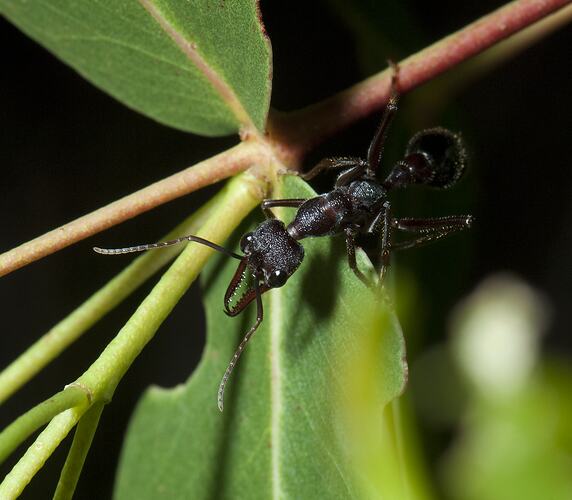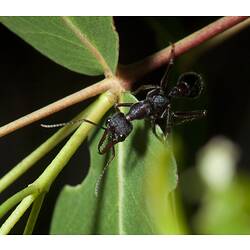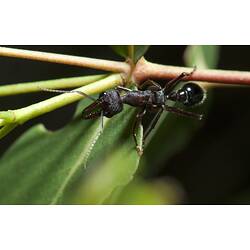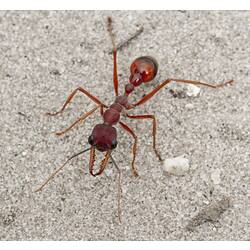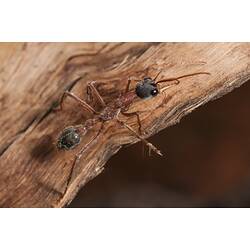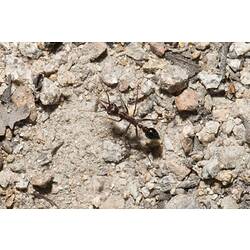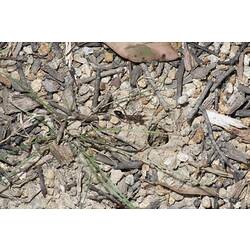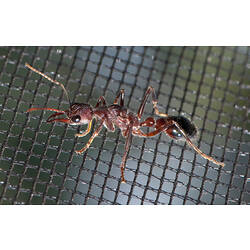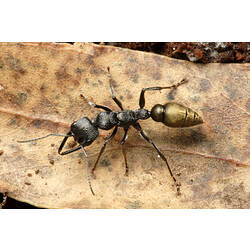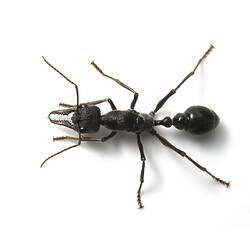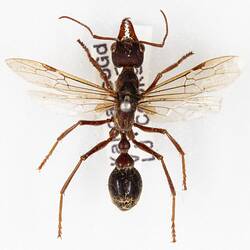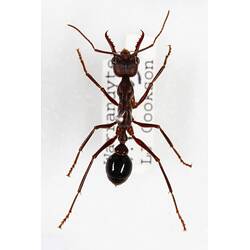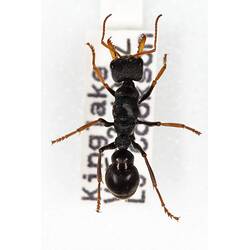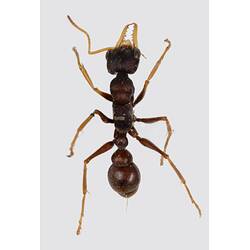General Description
Body red-brown to black with large, toothed mouthparts (mandibles) at the front of the head and large compound eyes. Length varies from 8 to 40 mm.
Biology
Bull Ants feed on sweet secretions from plants and insects, but also catch entire insects to feed to their larvae. They use their powerful sting to kill prey. They can sting humans if disturbed, sometimes causing an allergic reaction. Most species nest underground in debris, decaying tree stumps, rotten logs, rocks, sand and soil, and under stones. The nests can extend several metres below ground. On the surface the nests can be mound-shaped and often have cleared areas around entrance holes. Most species are diurnal (active during the day), and forage on the ground or on low vegetation. One species in the genus is considered vulnerable to extinction.
Distribution
Mainland Australia and Tasmania.
Habitat
Urban areas, forests and woodland.
More Information
-
Animal Type
-
Animal SubType
-
Brief Id
Large ants with large jaws and eyes.
-
Colours
Black
-
Maximum Size
40 mm
-
Habitats
-
Diet
Omnivore
-
Diet Categories
Insects, Nectar
-
Hazards
Painful sting, sometimes causes allergic reaction.
-
Endemicity
-
Commercial
No
-
Conservation Statuses
CITES: Not listed, FFG Threatened List: Not listed, DSE Advisory List: Not listed, IUCN Red List: Not listed
-
Taxon Name
-
Scientific Author
Fabricius, 1804
-
Common Name
Bull Ant
-
Kingdom
-
Phylum
-
Subphylum
-
Class
-
Order
-
Superfamily
-
Family
-
Subfamily
-
Genus
